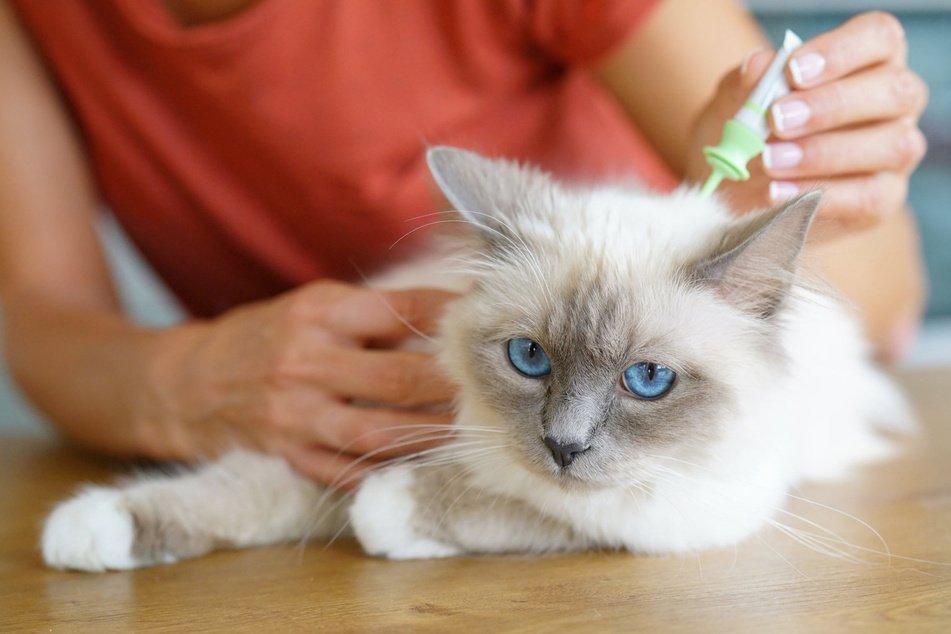From the days when they were wild creatures in the forest to now, fleas have been a persistent nuisance for cats. These minuscule bloodsucking insects have been unwelcome guests not just on your cat's fur but also on the ancestors of modern humans.
The Flea's Appearance
Most of us have seen magnified images of fleas under microscopes in our biology textbooks. An adult flea can grow up to 4 mm in length, but the ones you commonly find on your cat are about 2-3 mm. Their bodies are adorned with dense brown scales that glimmer when light hits them. Their front legs are relatively short, while their hind legs, the ones they use for jumping, are much longer and more robust. These long legs enable fleas to perform lightning-fast jumps of up to 30 cm.
Flea larvae, however, look like tiny light-colored worms. Interestingly, these larvae don't reside on the infected animal's body but instead in the environment, such as bedding or on nearby objects.
Signs of an Infestation
Unlike other blood-sucking insects, fleas don't numb the bite area. This gives them an advantage - they can make a quick escape immediately after biting, leaving the "crime scene" behind.
Despite their small size and rapid movements, you can spot signs of flea infestation in your cat through several indicators:
1. Restless Behavior: Flea bites can be painful, causing your pet to twitch its skin at the bite site.
2. Scratching: A cat with fleas doesn't merely scratch; it aggressively bites into its fur, trying to get rid of the parasites.
3. Flea Dirt: While combing your cat's fur, you may notice brownish, almost black specks - these are dry flea feces, left behind in large quantities.
4. Visible Fleas: In severe infestations, you can even see fleas with the naked eye, most commonly on your cat's abdomen, in the armpit area, and on the neck.

Consequences of a Severe Flea Infestation in Cats
These parasites are often carriers of dangerous diseases such as mycoplasmosis, rickettsiosis, and dipylidiasis. In addition to the risk of infection, they can cause the following problems in your feline friend:
1. Dermatitis or Allergy: Flea saliva contains around fifteen allergens that can affect your cat's body.
2. Anemia: This is especially concerning for small kittens who can become severely weakened by the insects.
3. Pyoderma: Constant scratching of the bite site can lead to open wounds, which not only accumulate dirt but also bacteria.
4. Worm Infestation: Fleas can harbor worm larvae, which your cat may ingest while trying to remove the flea.
How to Handle Fleas in Cats
No cat is entirely immune to infestations. Even if your pet never leaves the apartment and has no contact with other animals, flea larvae can be introduced on shoes by guests or even by the owner.
Veterinary pharmacies offer a range of anti-flea products. Depending on your cat's age, lifestyle, and even preferences, you can choose from flea drops, shampoos, or sprays. For prevention, you can opt for an anti-parasitic collar. However, it's advisable to consult a veterinarian before using any of these products.
Extreme caution should be exercised when treating kittens, pregnant, or nursing cats for fleas. The safest option, suitable even for newborn kittens, is combing or manually removing fleas. While it's a labor-intensive process, it's entirely safe. A pregnant or nursing mother cat can be bathed with an insecticidal shampoo - the toxic substances will not enter her bloodstream and, therefore, won't affect her milk. If these methods are not suitable or not effective, it's essential to consult a veterinarian promptly, as flea infestation in unborn or newborn kittens can lead, at the very least, to anemia and, at worst, to fatal outcomes.
